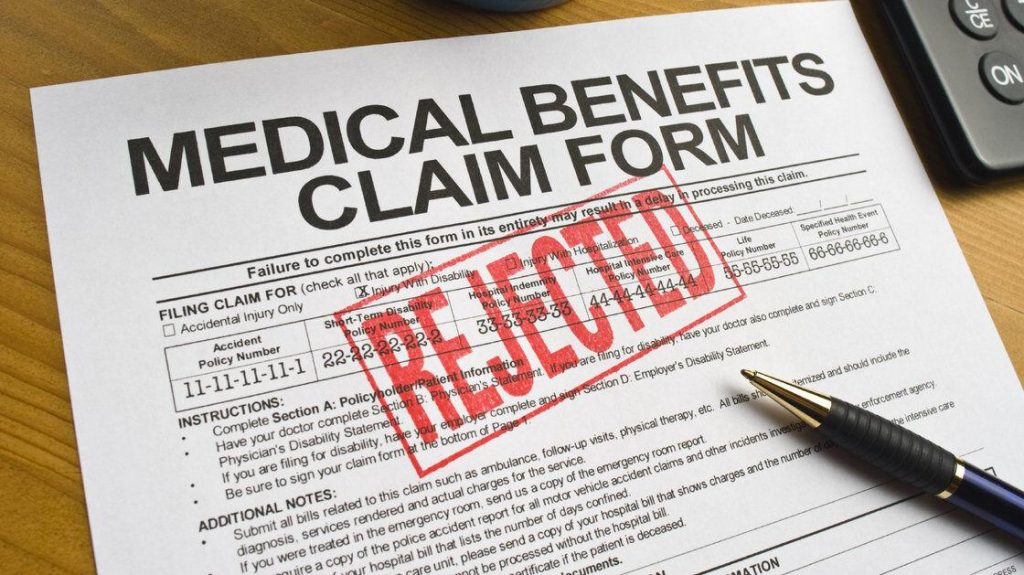Navigating the world of health insurance can sometimes feel overwhelming, especially when it comes to filing claims. But don’t worry — it doesn’t have to be complicated! Whether you’re new to health insurance or just need a refresher, this simple step-by-step guide will walk you through the process of filing a health insurance claim with ease. By the end, you’ll feel confident tackling your paperwork and getting the reimbursement you deserve. Let’s dive in!
Table of Contents
- Understanding Your Health Insurance Policy and What Claims Are Covered
- Gathering Essential Documents and Information Before Filing
- Step-by-Step Process to Submit Your Health Insurance Claim with Ease
- Tips for Tracking Your Claim and Handling Common Issues
- To Wrap It Up
Understanding Your Health Insurance Policy and What Claims Are Covered
Before diving into the claims process, it’s essential to get familiar with the specifics of your health insurance policy. These policies often come with a detailed list of covered services, exclusions, and limits that can affect your claim’s approval. Typically, coverage includes hospitalization, doctor visits, prescription medications, preventive care, and emergency services. However, elective procedures, certain alternative treatments, or experimental therapies might not be covered, so it’s a good idea to review your policy or speak with your insurer to clarify any grey areas.
When understanding what claims are covered, consider these key points:
- In-Network vs. Out-of-Network: Services from in-network providers usually have better coverage and lower out-of-pocket costs.
- Pre-authorization Requirements: Some insurers require approval before specific treatments or surgeries to validate coverage.
- Deductibles and Co-payments: Know the amounts you need to pay before insurance kicks in and the share you’re responsible for afterward.
- Claim Submission Deadlines: Claims must be filed within a certain timeframe—missing this can lead to denial.
Gathering Essential Documents and Information Before Filing
Before diving into the actual claim process, it’s crucial to have all the necessary paperwork in hand. Start by gathering your policies and ID cards, as these contain important details like your policy number and contact information. Equally important are your medical records and receipts; these prove the treatments you received and the expenses you’ve incurred. Without these documents, your claim might face delays or even denials. Keep in mind that some insurers may also require a detailed physician’s report or lab test results, so check your policy’s fine print for any specific documentation needed.
To stay organized and save time, create a clear folder—physical or digital—that holds everything related to your claim. Items you might want to include are:
- Insurance policy copy and health ID card
- Itemized medical bills and pharmacy receipts
- Referral letters or doctor’s notes
- Prescription slips
- Completed claim forms (if pre-filled)
- Correspondence with healthcare providers or insurers
Having this comprehensive set of documents at your fingertips makes the entire filing process smoother, reducing back-and-forth with your insurance company and speeding up reimbursement.
Step-by-Step Process to Submit Your Health Insurance Claim with Ease
Begin by gathering all the essential documents required for your claim. This usually includes your health insurance policy number, original medical bills, prescription receipts, diagnostic test reports, and any referral letters from your doctor. Having everything organized before you start will save you a lot of headaches down the line. Don’t forget to double-check the claim form provided by your insurer—make sure every detail is accurately filled in, from your personal information to the specifics about your medical treatment.
Once your paperwork is ready, you can submit your claim either online or via traditional mail, depending on your insurer’s policy. For online submissions, most insurance providers offer an easy-to-navigate portal where you can upload scanned copies of your documents. If mailing, use a tracked service to ensure your claim reaches the right hands. Keep copies of everything you send, and note the submission date for your records. After submission, stay proactive by regularly following up with your insurance company through their customer service—this will help you catch any missing information early and expedite your claim processing.
Tips for Tracking Your Claim and Handling Common Issues
Once you’ve submitted your claim, staying on top of its progress is key to avoiding any surprises. Most insurance providers offer online portals where you can check claim status in real-time. Create an account if you haven’t already, and make it a habit to log in regularly—this can save you from unnecessary delays if additional documentation is required. Additionally, keep handy the claim reference number and your policy details when contacting support; having this information ready ensures smoother communication and quicker resolutions.
It’s normal to encounter a few bumps along the way. Common hiccups include missing paperwork, mismatched information, or claims denied due to coverage limits. When this happens, don’t panic. Reach out promptly for clarification and ask for a detailed explanation. You might find it helpful to:
- Keep copies of all correspondence and submitted documents organized.
- Note deadlines for submitting additional information or appealing decisions.
- Consult your insurance agent if you need assistance understanding complex terms or policies.
To Wrap It Up
Filing a health insurance claim might seem a bit daunting at first, but with the right steps, it’s definitely manageable. By gathering your documents, understanding your policy, and following the process carefully, you can make sure your claim is processed smoothly and without unnecessary delays. Remember, staying organized and reaching out to your insurance provider whenever you’re unsure can save you a lot of headaches down the road. Hopefully, this guide has made the whole process a little clearer and less intimidating. Here’s to hassle-free claims and peace of mind when it comes to your health!






